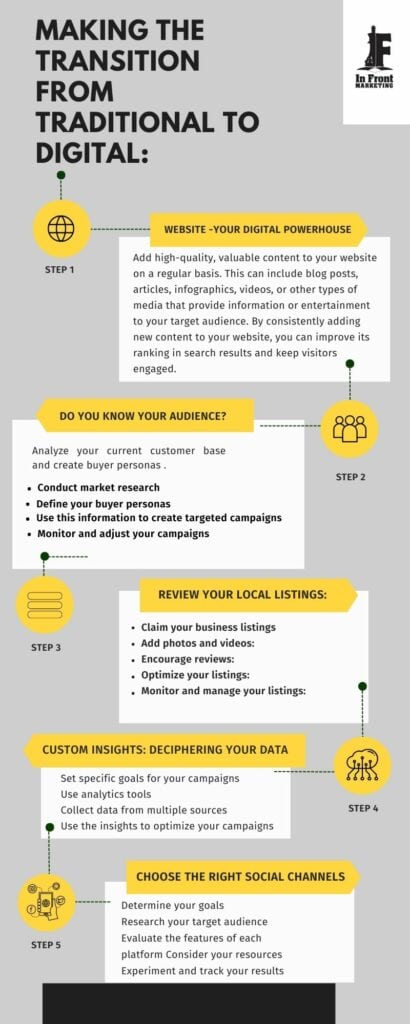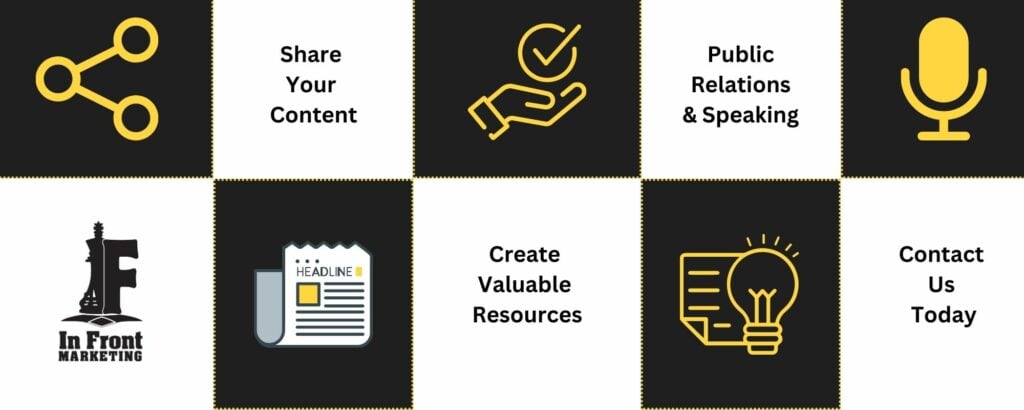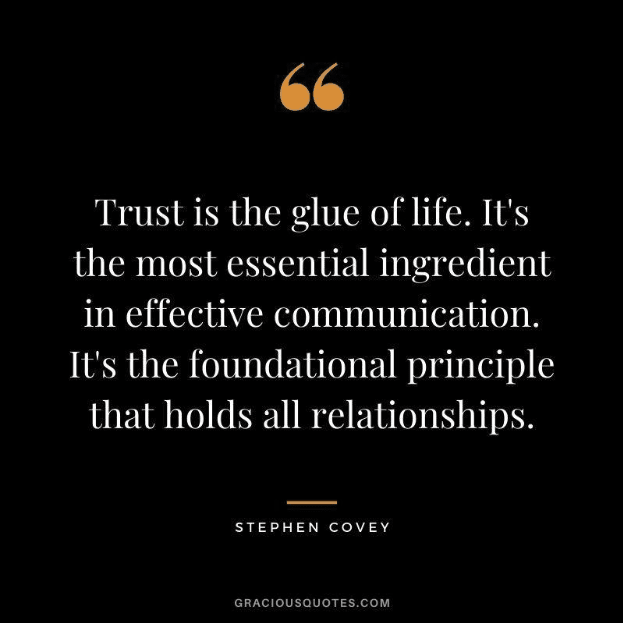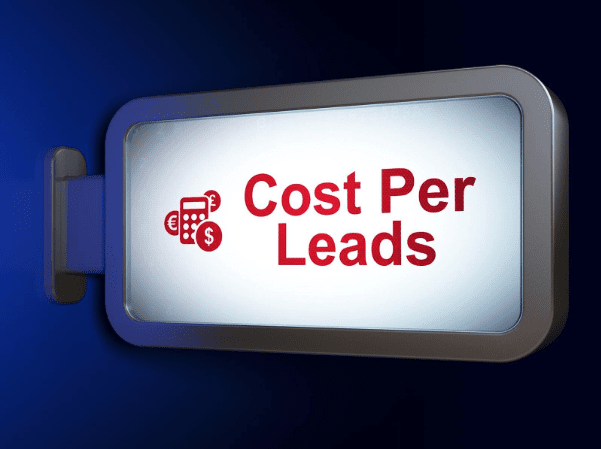The B2B sector has for a long time been one where face-to-face interactions, direct lines to your point of contact, and handshake deals were the best options for conducting business. And while there are still countless opportunities to be sought through these tried-and-true methods, the digital arena has impacted every area of the business world–including B2B marketing, lead generation, decision-making, and even the customer experience.
Moving your B2B business into the digital space doesn’t have to be a daunting task, though. By building on a solid foundation of B2B marketing strategies and B2B sales tactics, you can begin to expand your digital footprint and amp up your lead generation efforts through the use of content marketing, SEO, PPC, social media, and more.
We’ve brought together a full panel of B2B marketing experts and partners from our roster here at UpCity, and they’ve all combined their years of experience and new insights to offer B2B businesses like yours the best advice for diving into the digital arena and generating results.
Digital Marketing For B2B Businesses–Start Simple
As with anything new that your business is trying to do, the best advice we can think of is to “start simple.” And that advice is especially true when you are trying to transition your B2B business—and your customers—into the digital space.
“The biggest error I often see B2B businesses make is treating their online strategy and marketing tactics like they are designed for a different company. Your customers want to do business with you, so ask what you are doing offline that works, and apply the same action plan online.” –Law Smith, Fractional CMO at Tocobaga
Going digital doesn’t mean abandoning the methods that have always worked for you. It can mean a need to ramp those touchpoints up as you introduce a digital marketing strategy.
“B2B marketing can require upwards of 25 touchpoints to reach a business owner. These touchpoints can be achieved through events, trade shows, cold calls, networking, social media, digital, and traditional advertising.” –Dave Taylor, Cofounder of In Front Marketing
“When going through a digital transformation in your company, it’s important to retain a personal touch. Resist the temptation to over-automate, or to make touchpoints impersonal. Every potential client that visits your site wants to feel that you can solve their unique issue and that you’re speaking directly to them.” –Brian Craig, Managing Partner at LegalScapes
As the saying goes, “you’ve got to walk before you can run.” And several of our experts wanted to remind B2B business operators not to rush the process of going digital. B2B purchasing decisions take time, and so do changes or additions to your marketing efforts.
“Don’t rush into it, and show patience. There is always resistance to change, and not all partners will jump in right away. It will take time but (going digital) will be beneficial.” –Mohit Grover CEO of ESimplified Inc
“Don’t digitize just for the sake of it. It’s all too easy to purchase overhyped software tools or SaaS products that don’t move the right KPIs. Before doing anything, decide what areas of your business can be improved by digitization, then work back from there to decide what to invest in.” –John Hargan, Director at Velocity Digital LLC
Whether it’s in terms of developing your strategy as mentioned above or deciding what platforms and outlets to put your business on, everyone we spoke to recommended taking the time to consider and choose the approach that makes sense for your marketing team and your potential buyers.
“Don’t spread yourself too thin when investing in new digital initiatives. Most businesses don’t have to be on every social media channel, every video-sharing platform, or in all of the marketplaces. Think of what makes sense for your business, target market, and customer base.”–Colton De Vos, Marketing Specialist at Resolute Technology Solutions
On the other hand, our panelists also wanted to remind you not to shy away from places where your efforts make sense. Be sure to explore all sorts of outlets to understand where your pieces of content (like webinars, video marketing pieces, testimonials, and others) can have the most impact.
“My real tip is to get your business name on as many platforms as possible. Not the paid platforms that many small businesses get approached by, but quality ones like UpCity that deliver value even when you choose a free listing option. Quality backlinks to your website not only help your Google rankings, but they legitimize your business and help you better serve the other small business owners that need your help.” –Zach Springer, Website Designer at Springboard Website Designs
Speaking of your business’ website, our experts agreed that much of your early energy, planning, and quality content development efforts need to be focused on the “home base.” In other words, don’t spend all that time and money on other places until your website is performing at its best.
“Do more with your website, which can be a powerful marketing tool. Plus, all of your marketing efforts will lead back to it, so make sure you’re taking full advantage of that opportunity. Your website is completely owned by you which means your leads and traffic belong to you alone. So, thinking of ways to use your website to turn your business more digital will help you own your marketing and take advantage of having a more digital-driven business.” –Nick Leffler, Owner of Loclweb
“When going digital, streamline your efforts into one optimized website with mobile capabilities instead of trying to manage multiple social media accounts, online promotions, and digital marketing campaigns across different platforms. These things can come later, but starting with a strong foundation will allow your current customers to seamlessly transition to an online space while you incorporate new strategies to increase your reach.” –Asad Kausar, CEO of Dabaran Inc.
Another tip we heard from several people was related to something you are probably already doing–email. While the website might be the first stop in your digital journey, email marketing can be an incredibly valuable (and uncomplicated) part of incorporating more digital options into your business.
“Good email design doesn’t just mean visual appeal. It’s meant to help you build stronger relationships with your audience, sell more of your products, and improve your overall return on investment in email marketing. Most entrepreneurs can understand the process of ‘building an effective email following time-tested best practices,’ though, and this is a great place to start.” –Tom Kothman, Chief Strategist at Thomas Advisors LLC
Another piece of advice–keep your target audience in mind. And the best data available on your target audience? Your current customers. B2B companies may have smaller client bases, but the power of the relationships you forge and the amount of information you can learn are tremendous.
“Don’t try to sell a stranger. That’s like asking someone to pick out the names of your future children before you even have your first date. Offer value in advance of those cold messages. Whether via email or LinkedIn, try to make a genuine, meaningful introduction, offer something they find valuable, and build a relationship.” –Jay Vics, Founder of JVI Mobile Marketing
And finally, our UpCity partners were adamant that going digital isn’t something that can be accomplished in a day. And it’s not something that you want to do only occasionally, either.
“Going digital isn’t something you do for a few months. It’s a marathon, not a sprint. Lean into it and work it every week, every month. If you stop, you’ll go back to the place you started, wasting all that time, effort, and money in the process.” –Mike Lieberman, CEO and Chief Revenue Scientist at Square 2
Hear From Industry Experts
Read the latest tips, research, best practices, and insights from our community of expert B2B service providers.Email*First name*
Social Media Marketing Strategies For B2B Marketing
Social media is one of the first things that people think about when it comes to digital marketing to potential customers. And there is tremendous value in social for B2B marketing. Whether you choose LinkedIn, Facebook, TikTok, or any combination of the available social media platforms, one of the keys to focus on is creating high-quality content.
“It sounds like a broken record to remind you that podcasting is an excellent B2B marketing avenue. But as we head into 2023, podcasting remains strong because of how great it is at authentic networking with your target B2B buyers while also becoming an industry thought leader. Want to take it up a notch? Pull that content (or similar ideas recorded slightly differently) over to TikTok. It’s truly no longer just a teenager’s dancing platform anymore!” –Sarah Banowetz, Managing Partner at Banowetz Marketing
As with any marketing effort, content is king. So whether you’re looking at video content, podcasting, influencer marketing, or anything else you would use on social media, always think about what your customers are going to relate to or look for, and make your content relate to their needs.
“Making sales is a mark of success for any company, but as a small business owner, attracting customers into the sales cycle can be difficult. It can even be more challenging in the B2B (business-to-business) context. So actively listen to client feedback, and be sure to invest in a content marketing strategy that reaches your B2B customers.” –Mudassir Malik, CEO of PNM GROUP
Our panelists also keyed in on the importance of consistency. Your brand, your voice, and the type or types of information you provide on social media should offer a consistent portrait of your products, services, and your value as a B2B company.
“Avoid inconsistency! Make sure to get a schedule in place for your posting and content. This way you’ll not only stay on track, but you’ll stay in front of your audience, a key element to converting them into paying customers and not just viewers.” –Ben Precious, CEO of Pace Social Media
SEO And Content Marketing Tips For Lead Generation
Going back to your “home base” that we talked about earlier—your business’ website—many of our experts offered a strong emphasis on SEO. For many companies who are moving into the digital realm, the most bang for your buck is found in optimization. From brand awareness to conversion rates, SEO can have the biggest impact on your entire digital strategy and results.
“The number one thing B2B business owners should focus on is SEO. Ensure your business is easy to find online by increasing the number of positive reviews on Google and social media, optimizing your website for content and a great user experience, and acquiring backlinks via articles, blog posts, and online directories.” –Meg Mothershed, Co-owner and COO of Mothershed Design Co.
“The fastest way for B2B clients to capture eyes in the digital marketplace is by utilizing SEO and content marketing, followed by paid ads and social.” –Raminta, Owner of WFMA Marketing Agency
An area that gets overlooked when it comes to B2B websites, and one that is very important when it comes to digital impact, is making sure that your site works on mobile devices. Even B2B decision makers are using mobile for much of their buying and research, and your business could miss out on opportunities to connect with customers.
“People are using their smartphones more than ever to do research, so you need to make sure your website is mobile-friendly. Just because you redesigned your website three or six months ago does not mean it meets today’s standards.” –Kevin Heimlich, CEO of The Ad Firm
The SEO approach has value beyond your website, too, according to our experts. Utilizing SEO tactics and incorporating what you learn into your content development helps to amplify your results and strengthen your presence across the full spectrum of digital media.
“For your demand generation campaign, it’s best to focus on content marketing and a solid search engine optimization strategy. The idea is to secure quality website visitors that your content attracts, and use that content to show that you’re an authority in your subject and an expert who can be trusted.” –Melih Oztalay, CEO of SmartFinds Marketing
When it comes to content, you have a wide range of choices. But whatever pieces you believe will work best for your business and your B2B customers, be sure that your content has value and interest.
“Content creation has become a foundational piece for any B2B business. Video tutorials, infographics, blog insights, and social tidbits are all key components in digital conversation. But many B2B businesses simply explain their services when creating content. Instead, understand your customer’s challenges and speak to how your company solves them.” –Zach Phillips, Co-Owner of McMillan & Phillips
And in your content development, don’t be afraid to show off what your business knows and provides. Especially in the B2B space, expertise is the most effective hook.
“B2B leaders often fear that creating fully informed content will reveal too much information and make it unlikely that the prospect needs their help. In reality, most people hire your firm because they need the implementation that only you can provide. The information shared online helps them see you as an expert and understand the value you can provide.” –Krystal Covington, CMO at Go Lead Consulting
Our experts also pointed out a couple of common mistakes that B2B business owners can make when moving into the digital space. First, and this is true for B2C companies as well, is to make sure that your assets are yours. Ownership of your digital assets is key in every part of digital marketing and advertising.
“One of the biggest mistakes that small business owners make is not maintaining ownership of digital assets, with the biggest being domain ownership. Small business owners should always retain access and rights to their digital files, domain records, Google accounts, and email accounts, to name just a few. Handing these over to a developer or having someone else set them up could leave you in a position of losing the digital brand presence that you worked so hard to grow.” –Bianca Frank, Creative Director at Bianca Frank Design
The other mistake that our panelists warned of was to avoid trusting digital marketers or consultants just because they claim to be experts. They may have the expertise, but whether it applies to your business and your industry are much more important factor.
“The biggest mistake we have seen with recent clients were putting their trust in new digital marketers. These days, everyone promotes themselves as an ‘expert’ or ‘guru,’ but that is rarely the case. Your website is the new brick-and-mortar, and your digital strategy is like picking the location. Investing in a powerful site that not only ranks but converts is one of the most important investments a business owner can make in 2023.” –Ari Martinez, Director of Operations at The Ad Firm
Data And Your Digital Marketing Efforts
Of course, effort in your digital marketing and sales is only part of the equation. The other part is data. Without data, you can’t fully understand what’s working, what isn’t, and how you can make improvements or take advantage of B2B marketing trends that further grow your business.
“Use data to make better decisions. Data analytics can help you understand your customers better and make informed decisions about your marketing strategy. Make sure you’re collecting data from all your marketing channels and using it to guide your decisions” –Travis Lindemoen, Managing Director at nexus IT group
Don’t be afraid to mix things up and experiment, either. Every business is different, and every customer is different. So while you can make generalizations about some of your digital marketing efforts, the best method is still to try things, learn from them, and make adjustments.
“As you begin to implement your digital marketing goals and strategies, be sure to commit to continuous experimentation and learning. This will allow you to keep your digital transformation efforts fresh, adaptive, and scalable.” –Navneet Kaushal, CEO of PageTraffic Inc.
While experimentation is key, our panel of experts did warn against making changes too soon. It takes time to see what’s working and what isn’t, so B2B business owners need to resist the urge to make changes and modify things every day as results come in.
“You need to set your ad campaign up and run it for 14 days without changes, then review the performance and make adjustments. It can normally take one to two months to fully understand the account and how things are performing.” –Peter Berson, Marketing Consultant at Aveli By WSI
Finally, data needs to be at the base of everything your company does, and that requires building a company culture that values asking questions, analyzing results, and optimizing your approach wherever possible.
“Going digital is a long process for any company. And for that to happen successfully, you need to create an analytic foundation. It’s important to develop a data-driven culture that will help make business decisions. So support your data-first objectives with analytic tools, project management tools, SaaS tools, etc. This will help your business become more digital internally so that when you do advertise digitally you’ll have an easier time analyzing how effectively you are reaching more customers.” –Shan Serran, CEO and Founder of Veewz
Grow Your B2B Marketing Through Digital
While extensive, this is just a fraction of the advice provided by our expert panelists and partners here at UpCity. If your B2B business is beginning to make the transition to the digital space, or if you want to see how you can ramp up your digital efforts and find new avenues for growth, reach out to our extensive list of digital marketing consultants and providers. There is no shortage of help available, and you are sure to find a partner who understands your goals and can help guide you through the process.
Rebecca Lubecki/DIGITAL MARKETING






